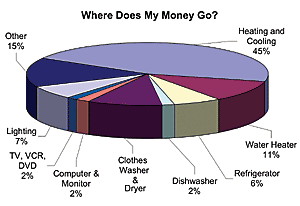Specifying Residential Appliances: Green Update
The Rocky Mountain Institute (RMI) observes that "Americans spend $43 billion annually to run household appliances, which is an average of $560 per year per family. If every household in the U.S replaced old appliances with efficient models, they'd collectively save at least $15 billion per year." While heating and cooling efficiency are important, it is at least equally important to pay attention to the energy efficiency of appliances that are specified into homes.
|
The significance of energy use goes beyond the monthly utility bill, however. Most of the electricity generated in the United States still relies on the burning of fossil fuels, which dumps carbon dioxide into the atmosphere. The current calculation is that one kilowatt-hour (kWh) consumed (or saved) equals 1.43 lb of carbon dioxide emitted (or saved) at the power plant. At an average of eight cents per kWh, the projected impact of $15 billion in energy savings referenced above would prevent the emission of 175 million tons of carbon dioxide annually. This is significant since carbon dioxide is one of the leading gases attributed to the "greenhouse effect" and global warming. RMI notes that the average American household produces approximately 9,900 pounds of carbon dioxide a year, which means that the energy used in homes generates more greenhouse gas emissions than cars. Hence, specifying energy efficient appliances is good for the homeowner or renter who pays the energy bill, the atmosphere, and the environment.
The ENERGY STAR® Program sets standards for different types of appliances. Specifications qualify each type of residential appliance for the program.
|










